Trying out hügelkultur with our homemade compost
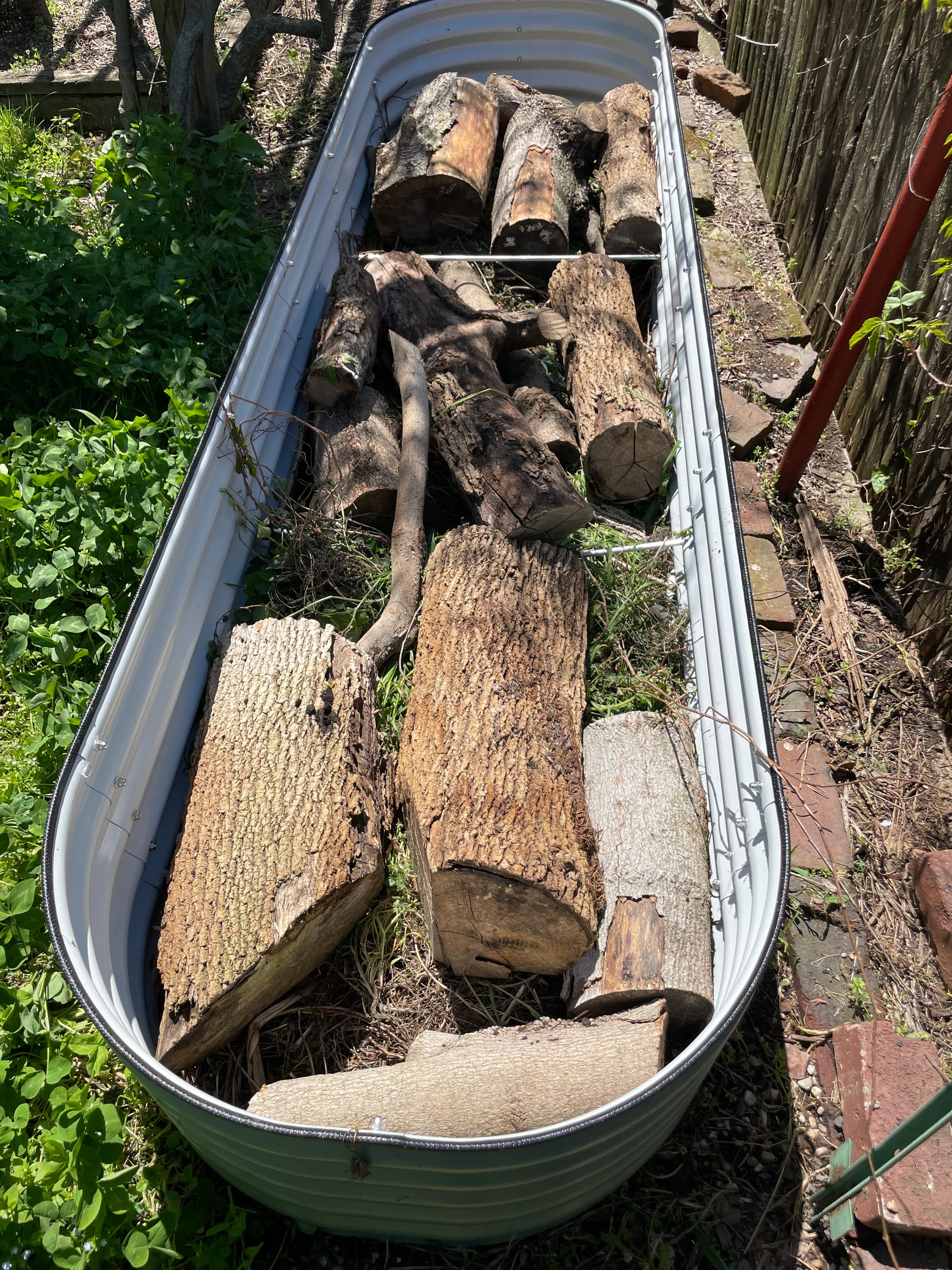
Roz and I have been composting for the last 2 years thanks to a compost bin left behind by the previous owners of our home. We have primarily been using it as a means to reduce food waste going out to landfills but haven’t had the motivation to actually use the compost we make - until now!
Now that planting season is underway, we installed a second raised garden bed and I wanted to apply some of the lessons we learnt from our first raised garden bed that we planted last year.
For our first raised garden bed, we used the giant cosmos that we had planted in our lawn to nature kit (shout out to my father-in-law Ken for the kit!) as the first bedding layer, mostly for drainage.
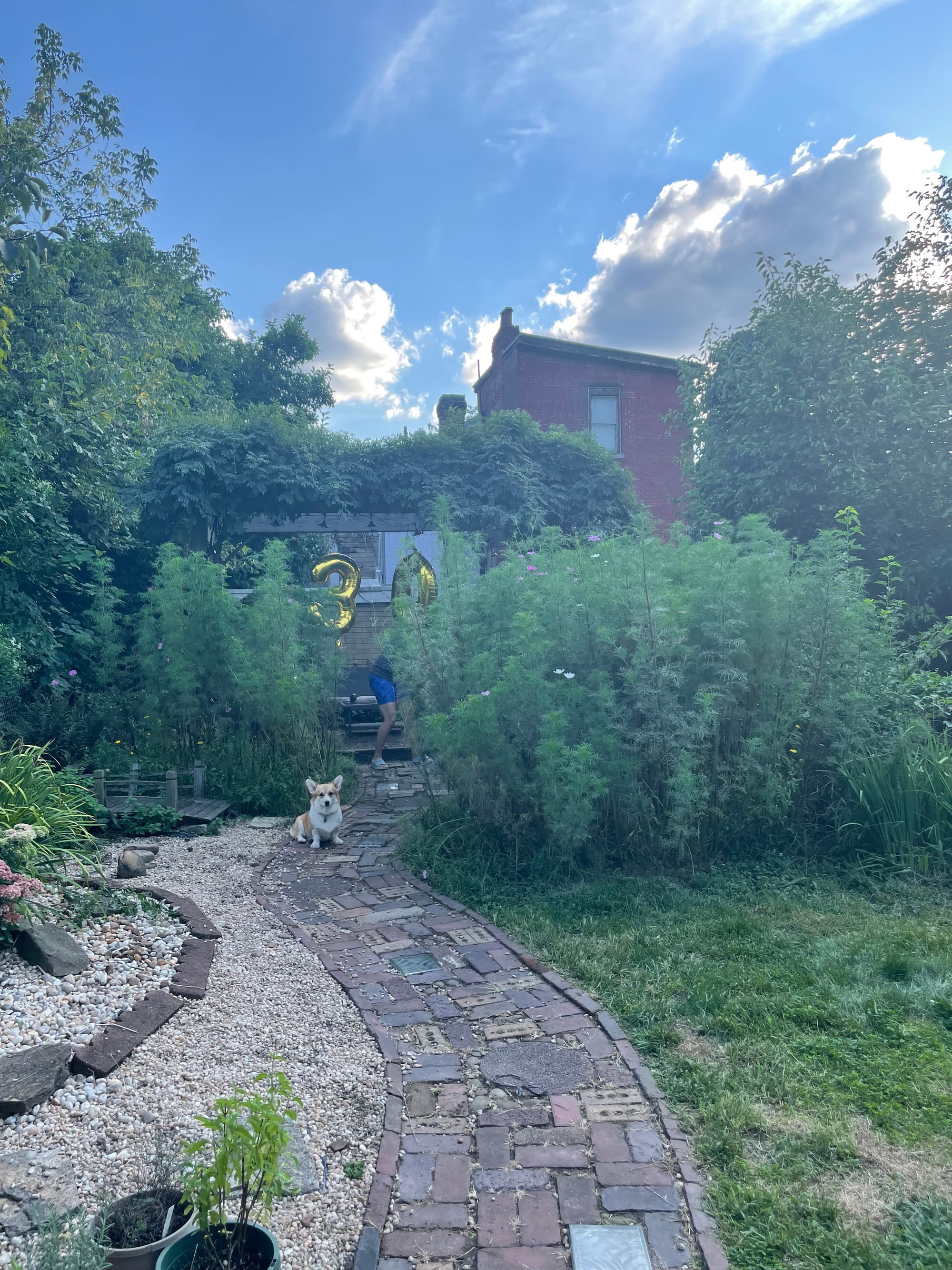
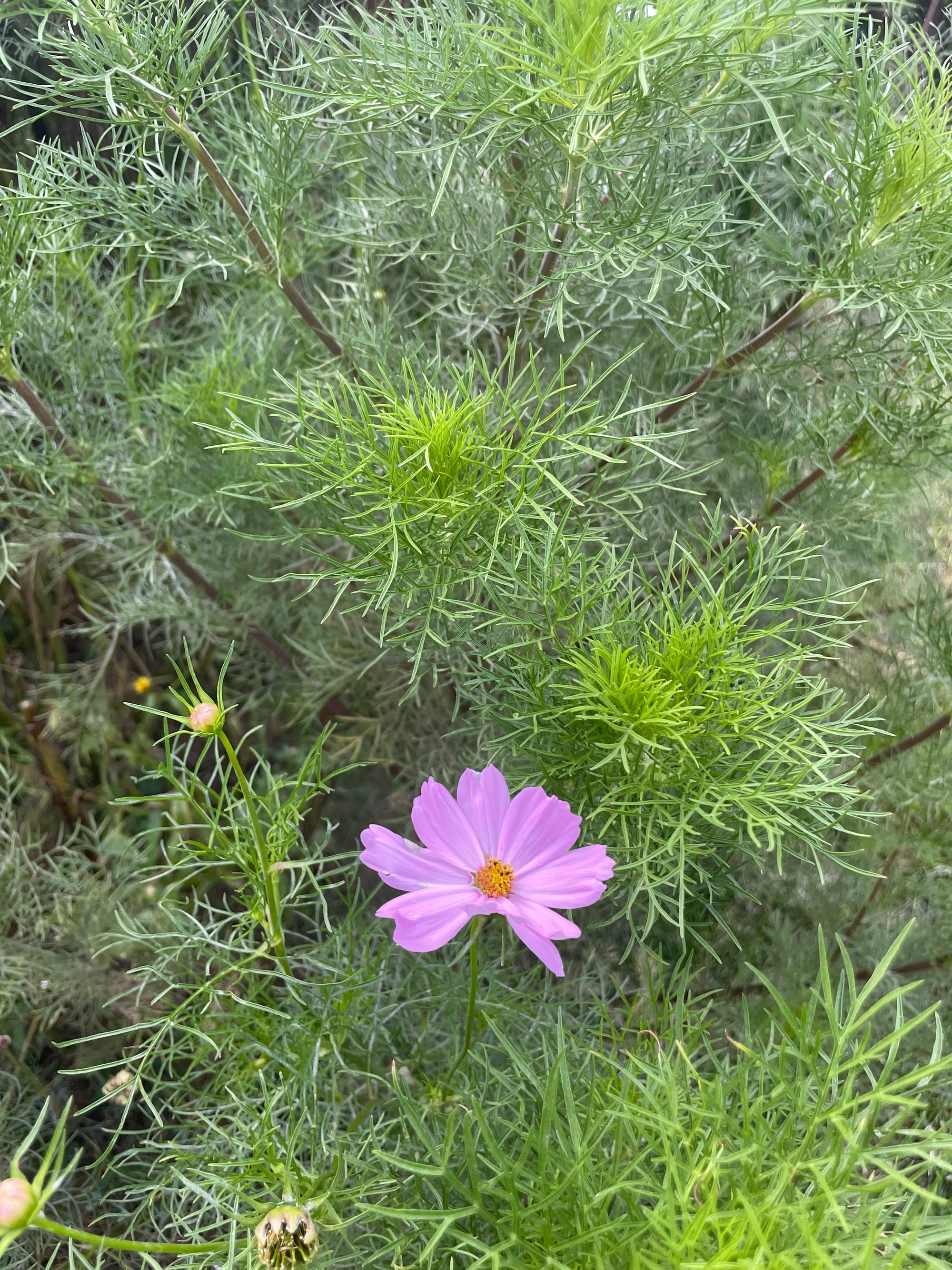

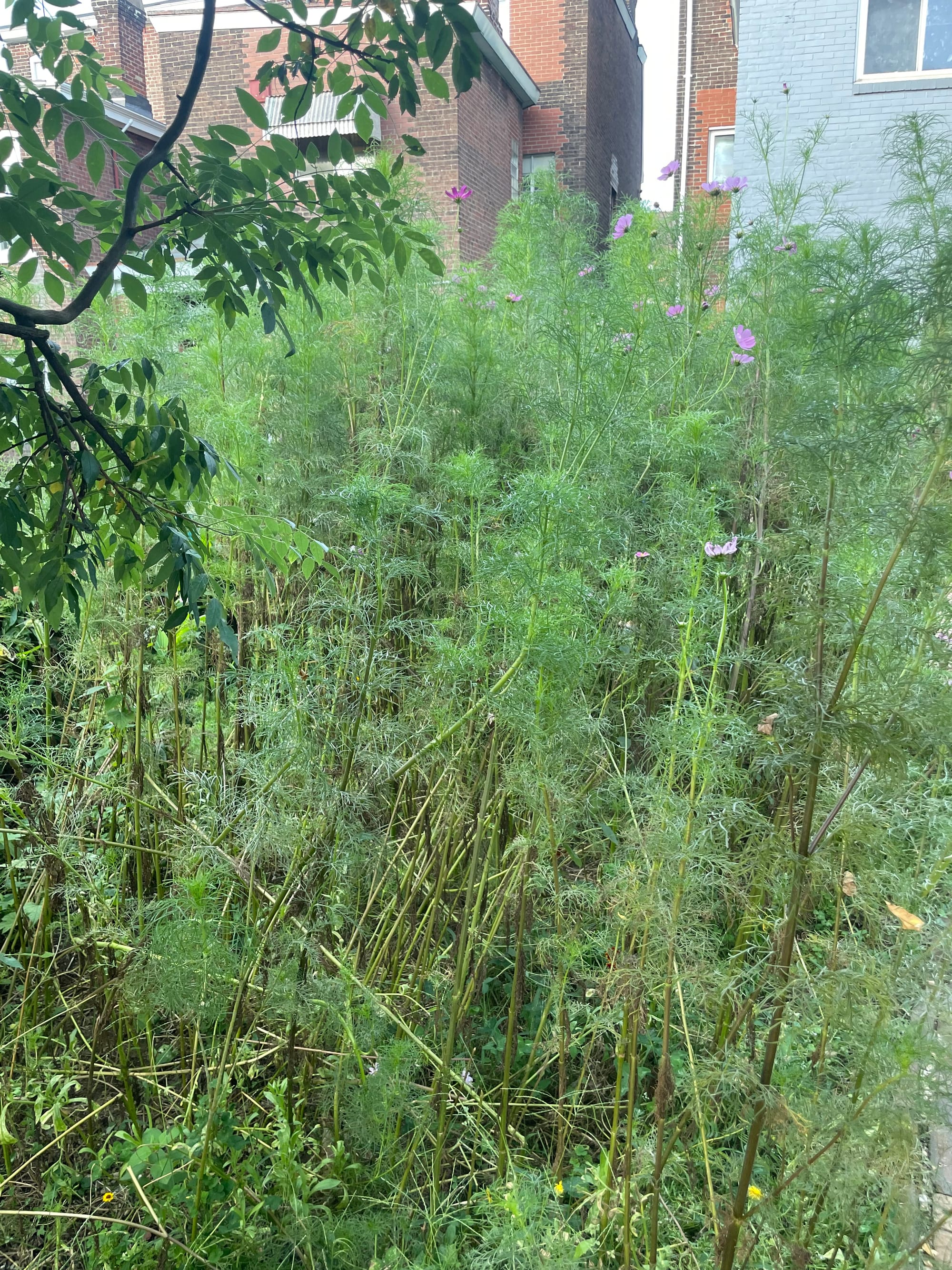
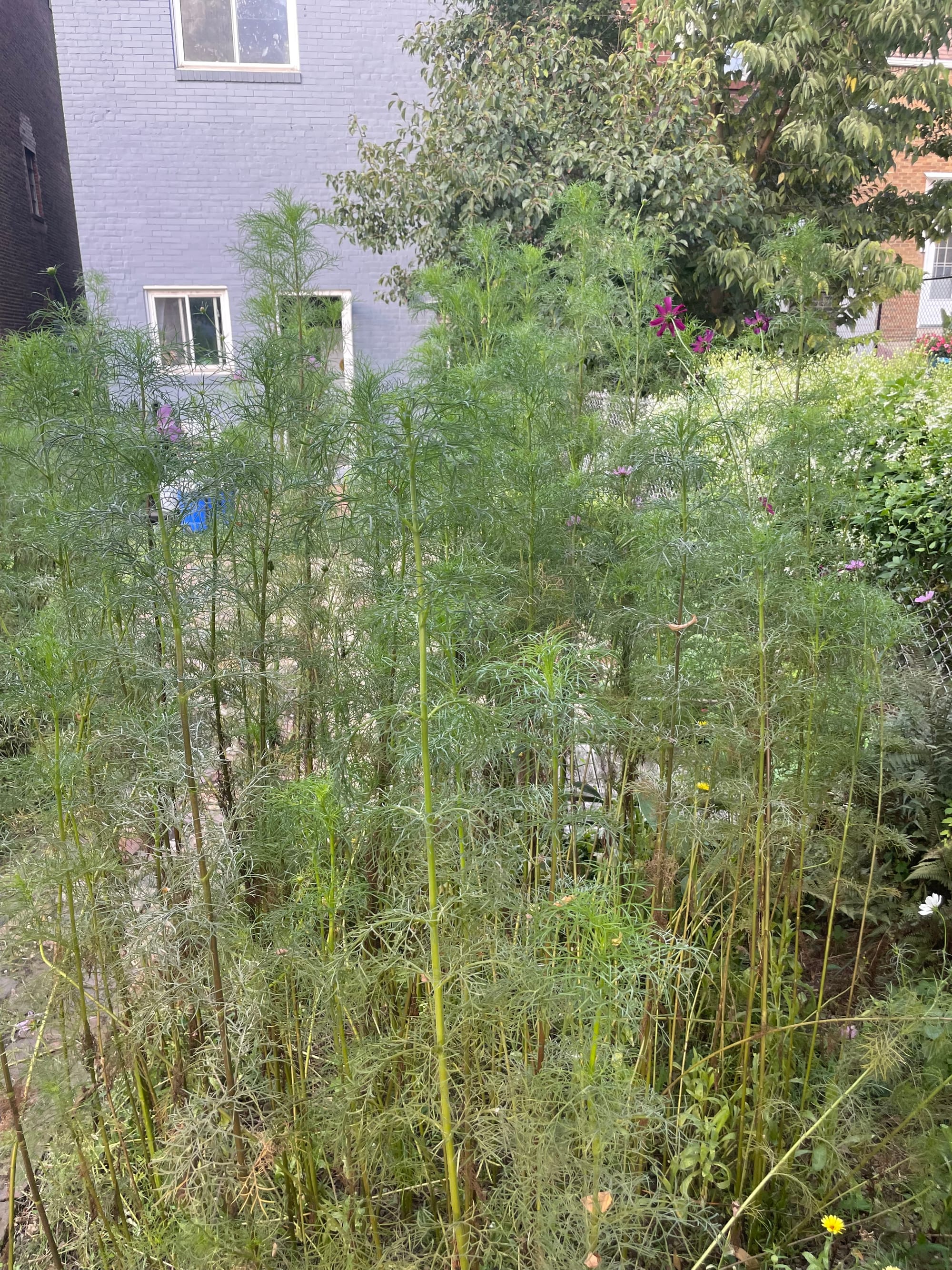
The giant cosmos in question
For the rest of the bed, we just used whatever good soil that a big retailer had on sale, and it turns out it takes a lot of soil to fill up a raised garden bed!!!
This new raised garden bed is 9 x 2.5 feet by 17" tall, which calculates out to 32 cubic feet - roughly 22 bags of soil, with 1.5 cu. ft in each bag. Depending on what brand of soil is purchased, that could go up to $200-$250 in just soil costs - so the primary problem I wanted to solve was: how do we save money on the amount of soil needed to fill a raised garden bed?
That's when I stumbled onto the practice of hügelkultur: "literally mound bed or mound culture, is a horticultural technique where a mound constructed from decaying wood debris and other compostable biomass plant materials is later (or immediately) planted as a raised bed". This practice seemed perfect for what I wanted to do especially with how it could fill up space in the raised garden bed and save on soil costs.
With the ready availability of biomass in the form of old bamboo plants we had cut down and dried and our homegrown compost all that remained was to source some woody material. I was about to go purchase just some firewood from our local hardware store - however that's when my hair dresser Addison stepped in and let me know his dad had a bunch of logs from an old tree that the electric company had chopped down but not taken away, and he was looking to get rid of it somehow. Thanks to Bruce for the free wood!
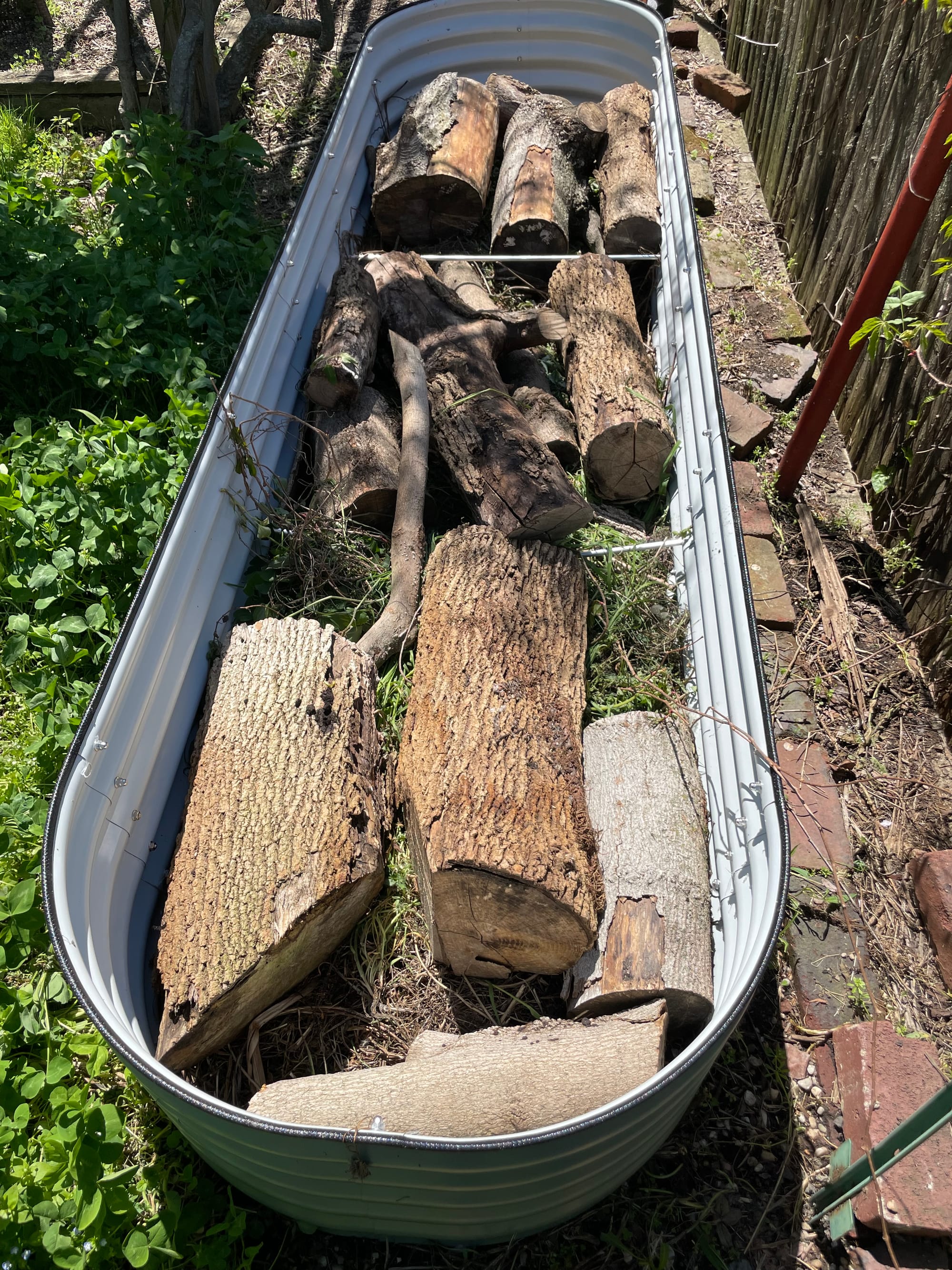
So we were able to use old biomass from maintaining our backyard, like some bamboo we had cut down and been drying as well as a second crop of the cosmos as the very first base layer. On top of this we added a third of the logs that we sourced from Bruce and we'll be splitting the other 2/3rds with some friends for some firewood (going to go buy an axe today).
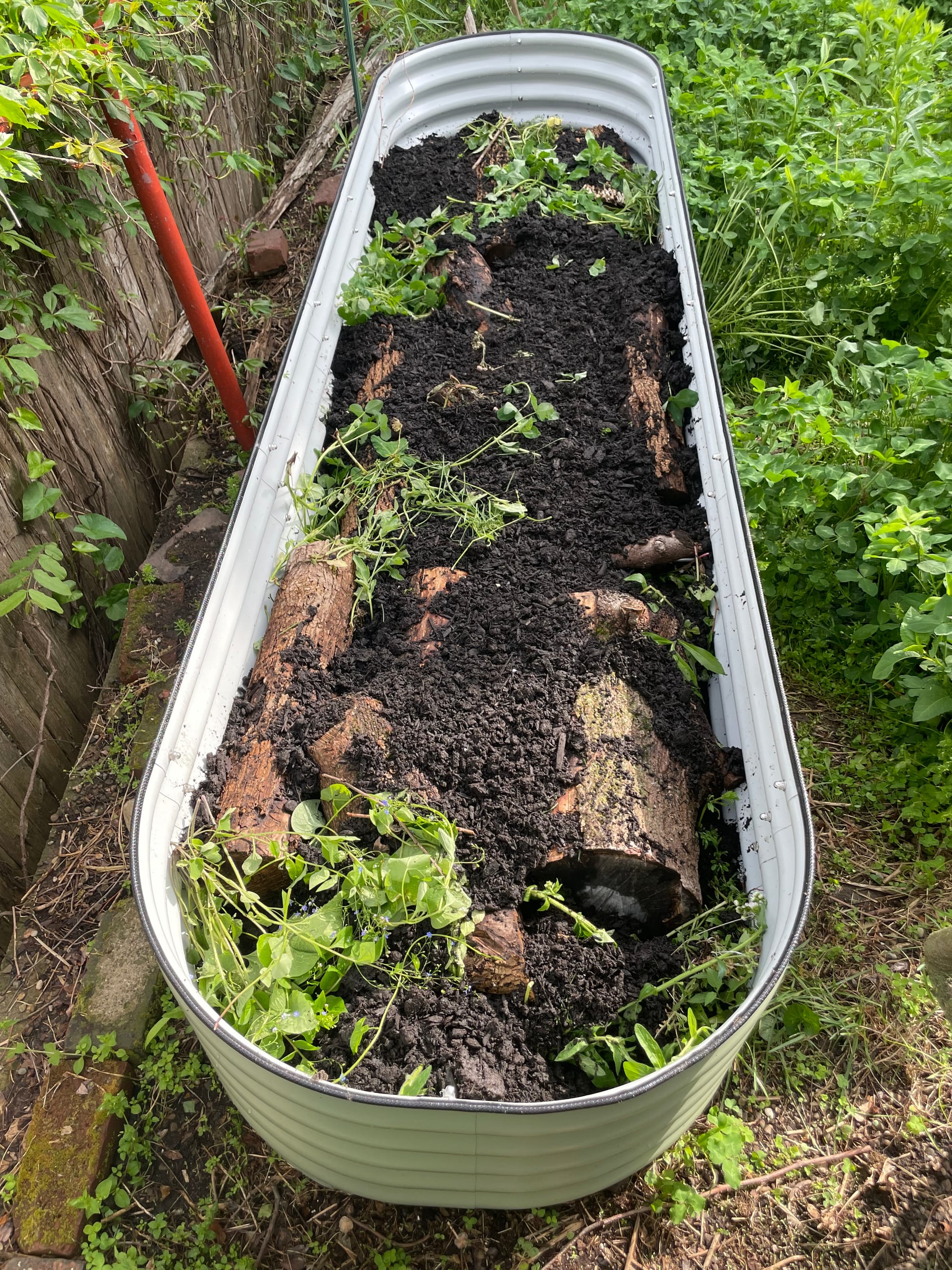
On top of this layer I put four 0.75 cu. ft bags of top soil just to start filling in some gaps. I think for our use case we do not want plain top soil as our top most soil and instead want to opt for a rich organic soil layer instead, so this top soil usage in the lower layers felt right.


On top of the initial top soil layer, I went with all of our compost which was a combination of finished as well as half-rotted, which seems in line with hügelkultur practices. I was surprised by how much composted material we actually had on hand, but I guess that's what happens when you keep adding stuff for 2 years and don't use it!
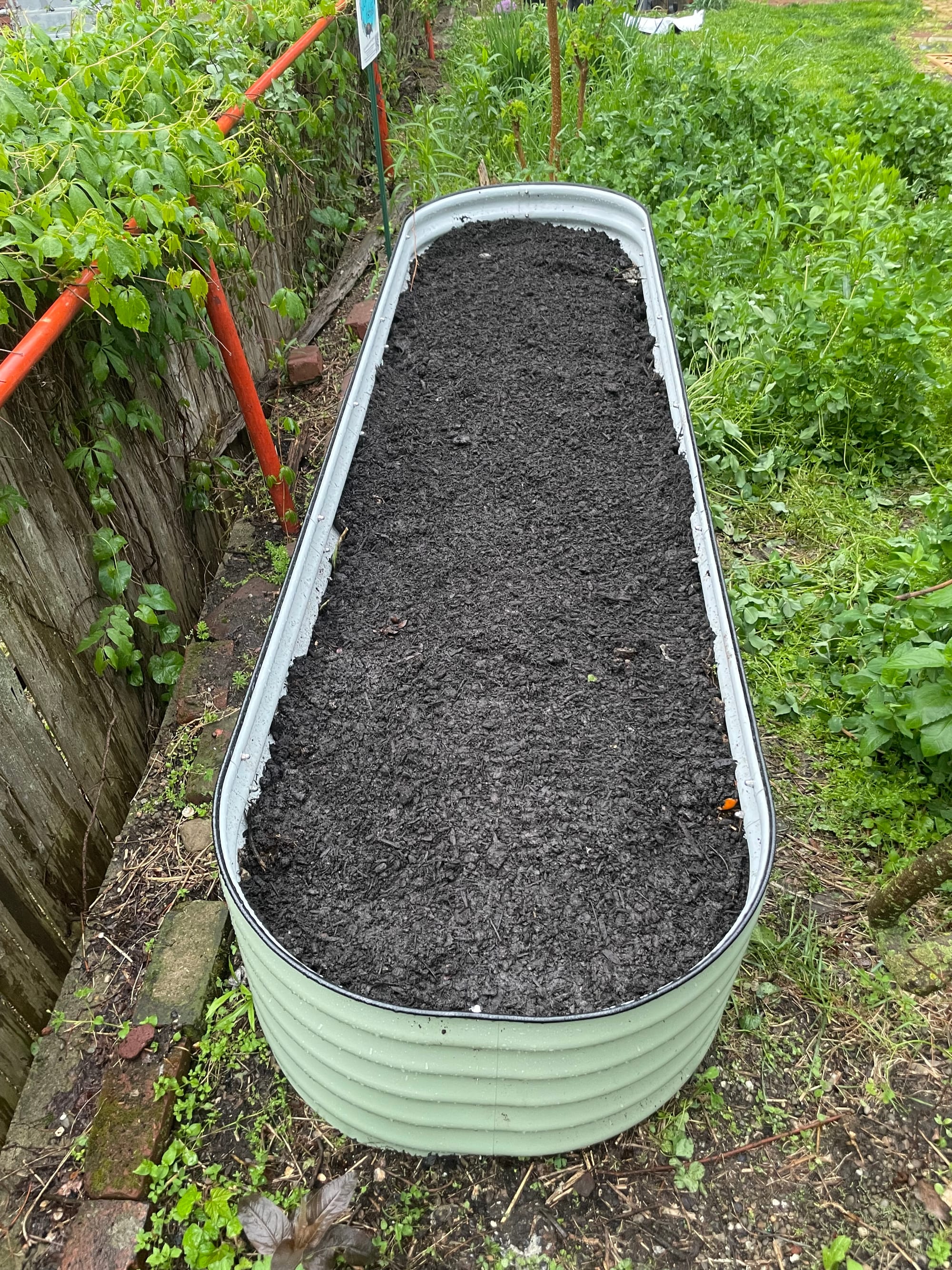
I was trying to heavily water each layer as I went, and there was some heavy rain coming in the day I put down the compost layer - so I wanted to leave the compost material as open to the rain as possible while staying covered from any animal prying. As such, on top of the compost layer I went with four more 0.75 cu. ft bags of top soil, just to bury it from any animals wanting to take a sample while maintaining a good chance of being watered by rain.
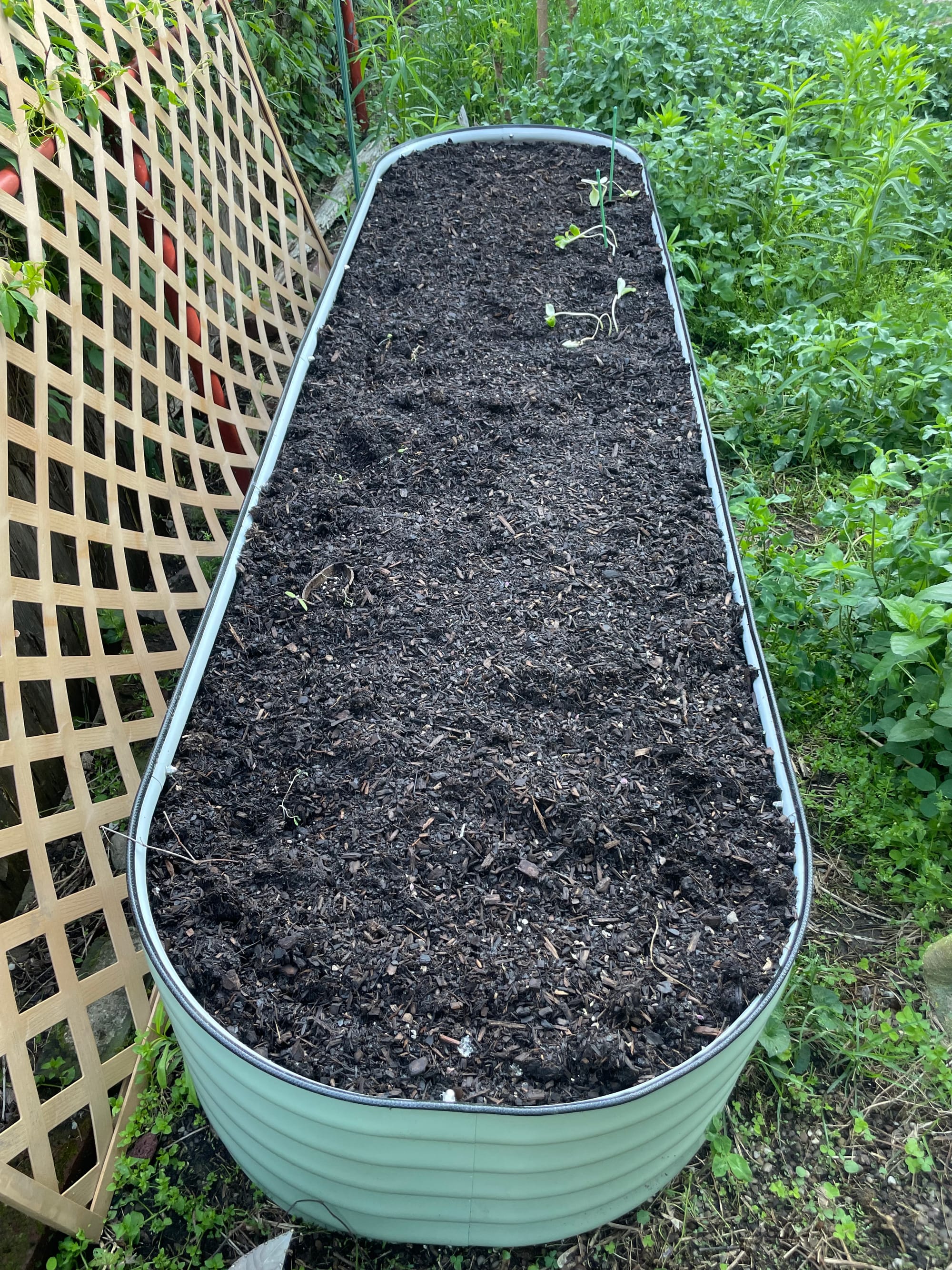
Finally, on top of this layer went seven 1.5 cu. ft bags of organic raised garden bed soil. This was a change up from last year where I don't believe we actually used raised garden bed soil - so we'll see how it goes this year. Also shout out to Roz and Sabrina who actually moved the bags and laid down the soil for this layer while I was cleaning up our front porch plant situation!
So with all of that, we ended up using a total of eight bags of 0.75 cu. ft. of unbranded topsoil ($2.97 ea.) and seven bags of 1.5 cu. ft. organic raised bed soil for the final layer ($8 ea.) translating to a total of 16.5 cu. ft of soil used versus 32 cu. ft of soil if we hadn't gone with this hügelkultur approach. That translates to a cost saving of about a $100 which we can put directly towards plants for the raised garden bed now!
I will acknowledge that this may not be 100% authentic and true hügelkultur but I think it's close enough to at least be called a hybrid. Let me know what you think! We are planning on growing tomatoes, zucchini, Japanese eggplant and serrano plants this year!!
